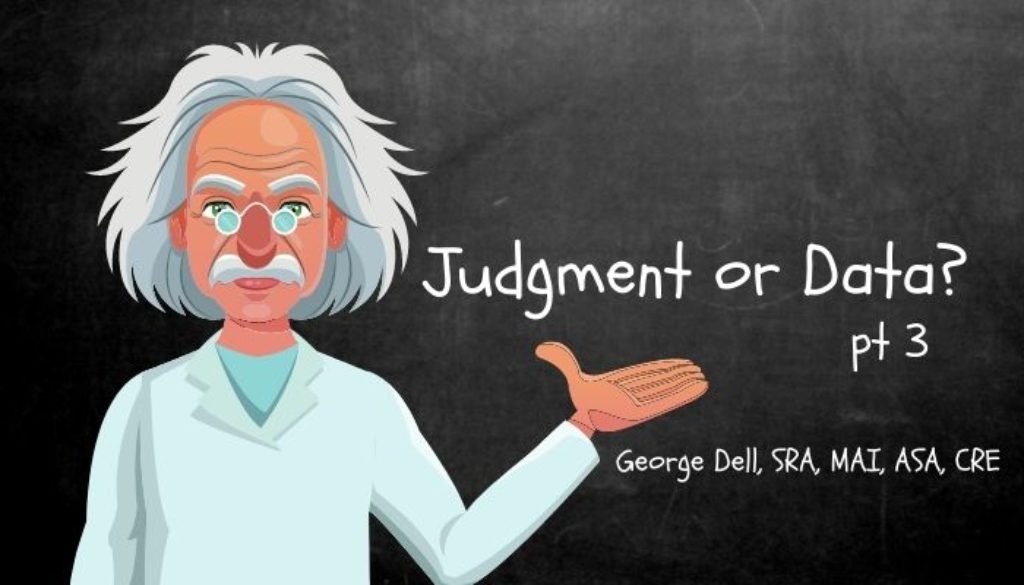Judgment vs. Data. Computer quants vs field experts. Each thinks they have a better hammer. Quants think the experts have their eyes closed. “Experts” think the quants are hammering screws. Both have sore thumbs. Better
In part 2, we considered heuristic analysis which focuses on mental efficiency to help make judgments and decisions quick and relevant. Here, in part 3 we look at the data analysts’ viewpoints – empirical research with quantitative methods. In part 4 we will see a concise model of asset assessment (valuation), as it applies universally to traditional appraisal, AVMs, and today’s intrusion of EBV (Evidence Based Valuation)©. In part 5 we will consider the position of AVMs (Automated Valuation Models), in the heuristic/empiric dichotomy, directly relating it to the ‘universal’ valuation process as it applies to all the noted methods or industry responses.
Empirical analysis focuses on real-world evidence and measures, rather than theory and concepts. It is based on “actual experience.” And there is a methodology. Look for:
- clear and specific questions;
- ways to recreate or replicate the analysis;
- a defined population or prediction being studied;
- a description of the model used – to include data selection, controls, and measurement methods.
Empirical methods are considered more ‘scientific’ in process. This can be experimental, like in a lab, or observational, like in valuation practice.
It is also important to understand the type of evidence: empirical, anecdotal, or logical. In particular, it is critical to make clear the assumptions, which are taken as fact for purposes of the analysis. It is important to note the relevance of judgment in formulating the hypothesis, assumptions, as well as the path of investigation. This includes the overall data to be considered (the project data frame). The “scope of work” relies on abductive reasoning, applying the analyst’s best knowledge and experience.
Logical evidence can be simple and definitive, or it can be probabilistic – such as answering the question: is it competitive comparable, or not? The categorization is logical, using deductive reasoning, while the probability itself involves inductive reasoning.
Finally, anecdotal evidence comprises stories. Then the story itself may be true or it may be false. One comparable property may be correctly reported, or it may not. Thus, the truth of one piece of anecdotal evidence may also be probabilistic in nature.
Quantitative methods may include empirical evidence and logic, or they may require some measure of ‘trueness’ or reliability (the obverse of risk). Today’s quants tend to be strong in computer use, and the creation of algorithms. Anecdotal information is seldom applied, while there is great deal of reliance on probability.
Quantitative methods, for property value, risk, and forecasting – apply three basic principles in economics: 1) Optimization – finding the maximum, minimum, (or best) value; 2) Equilibrium – finding the crossing of the supply and demand curves, for example; and, 3) Empiricism – analysis of data that itself is evidence-based.
In the next part of this series, we will consider the commonalities and differences in the application of traditional appraisal, AVMs (Automated Valuation Models), and Evidence Based Valuation (EBV) ©. Better
